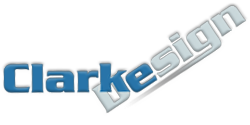Search Engine Optimization
Take the steps to help get found on Google!
Search engine optimization... or SEO for short, is the enhancement of a website to improve its rank on major search engines like google, msn or yahoo. Studies regularly confirm that the further down the results listing you are, the less likely you are to be found. To aid in your search results your page must be effectively coded, and have great content that is heavy on keyword density.
“I found you on Google!”

Keyword analysis - Part of getting good rankings in a search engine is determining by what keywords the client types in. If you have a cycling cap business, it is safe to assume the “cycling caps” is going to be searched. Sometimes though, a market is so saturated with competition, it is important to find commonly used search keywords that are not on the competitions’ websites. By doing keyword analysis, we may determine that “cotton cycling caps” is just as common a keyword search as just “cycling caps” but very few sites are optimized to have the word “cotton” throughout the website. This type of research for your business allows us to create a website rich with keyword content that is most appropriate for your business.
Your site was on page one of the results”
Code Optimization. Coding your pages can be done in many ways. In fact, two designers could make the page identical to the user, but take drastically different routes on the back end side to achieve the visual results. There are many steps I take in coding pages however that help the search engines effectively catalog and index your site, and make your content easy to digest. They include:
- Intuitive naming for all webpages and images – if the picture is of a red cycling cap, the file name will include those words in it (red-cycling-cap.jpg). Same goes with pages (cycling-caps.html).
For example, the wrong way:
<img src=”logo.jpg” />The better way:
<img src=”walz-cycling-caps-logo.jpg” /> -
Clean and Lean HTML Code – utilizing css and web standard coding I can avoid designs that rely on tables or unnecessary images to make the layout look as intended. Often times, people write pages that are so code heavy, the actual content that makes sense to a search engine would be a low percentage of the entire pages code. For example
The unfriendly way:
(212 total characters/34 SEO Characters - ~16%)<table> <tr> <td> <img src=”walz-cycling-caps-logo.jpg” border=”0” width=”200” height=”100” /> <br /> <font face=”arial”> <font size=”2”><b>Welcome to my storefront homepage.</b></font> </font> </td> </tr> </table>The optimized way:
(111 total characters/34 SEO Characters - ~31%)<div id=”walzHeader”> <img src=”walz-cycling-caps-logo.jpg” /> <p>Welcome to my storefront homepage.</p> </div>To optimize the code, I have taken all of the layout and font treatment code out of the main page and placed it in an external style sheet file. Leaving behind only the bare minimum of code. The Search engine now can find the important words and images more easily without choking on added HMTL code.
-
Search friendly tags – in addition to clean code and intuitive naming, I always make the effort to add in tags that help search engines know what they are reading, as well as help those who may be using screen readers or have images turned off in their browsers.
All images that contain text will have alt and title tags added to them to further emphasize the words contained.
The unfriendly way:
<img src=”walz-cycling-caps-logo.jpg” />The optimized way:
<img src=”walz-cycling-caps-logo.jpg” alt=”Walz Cycling Caps Logo” title=”Walz Cycling Caps Logo” />Adding in smart markup like ALT and TITLE tags assist in optimization. So does the addition of meta tags throughout your website. Meta tags contain keywords that someone might use to search for your site, as well as a 2-3 sentence description of your company or pages. For more information about meta tags, I invite you to read my article “Metatag creation for effective websites”
“Your website had what I needed!”
CONTENT OPTIMIZATION - Search engine optimization also takes place on the content side. Well-written copy, which is useful to the reader, will always be a priority for sites I work on. In addition to the reader, efforts should be made to make the copy on your site optimized and rich with keywords that are relevant to your company and industry. I always make sure the reader is not neglected in efforts to make the text denser in keywords. Take a look at the 3 examples below
The unfriendly to search engines way:
Friendly enough, but not very intuitive to a search engine regarding what is on the site.
The unfriendly to readers way:
Lots of keywords but jeez, who wants to read that?
The perfect balance optimized way:
I always write for the visitor first, and then made sure keywords that folks will type into a search engine are eloquently included in the copy. For more information on the content writing services offered by ClarkeDesign, please visit Copywriting Services.


